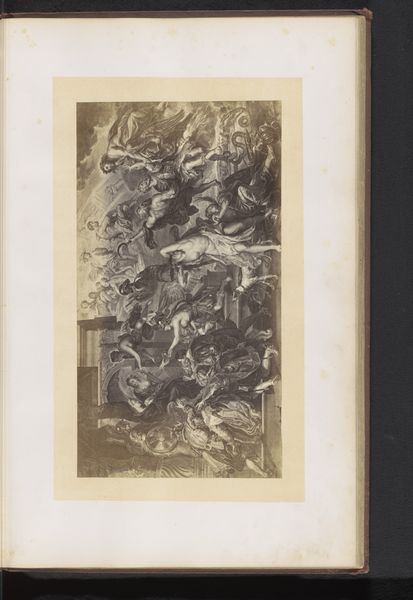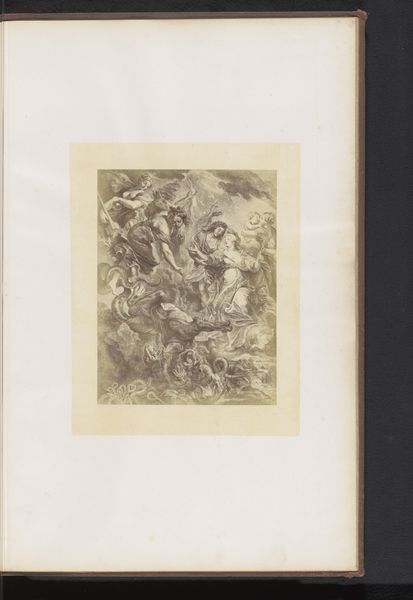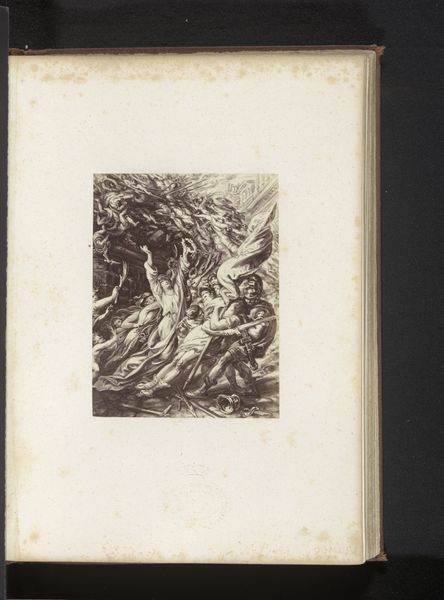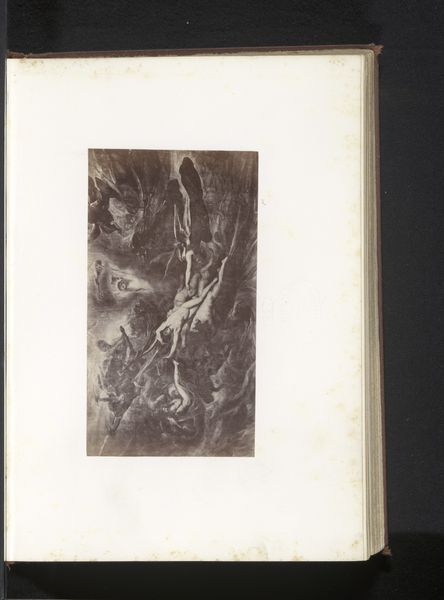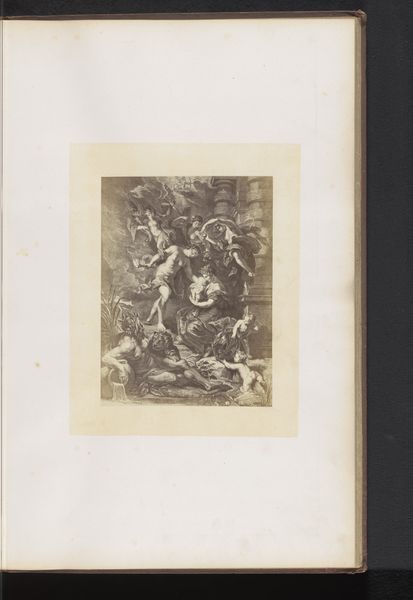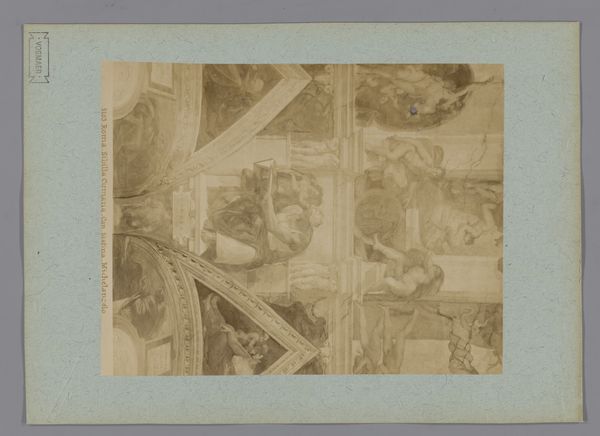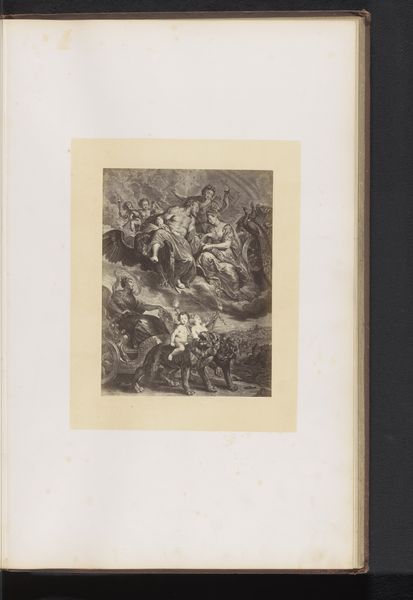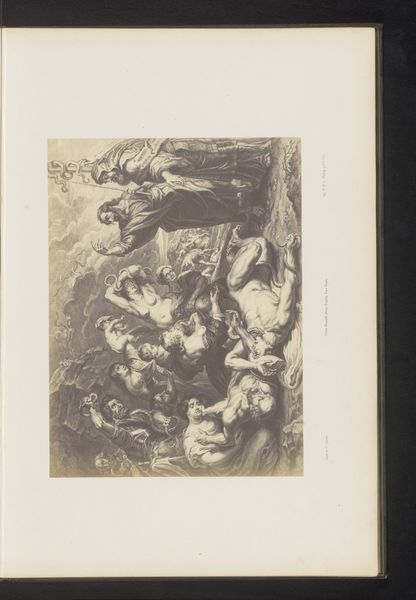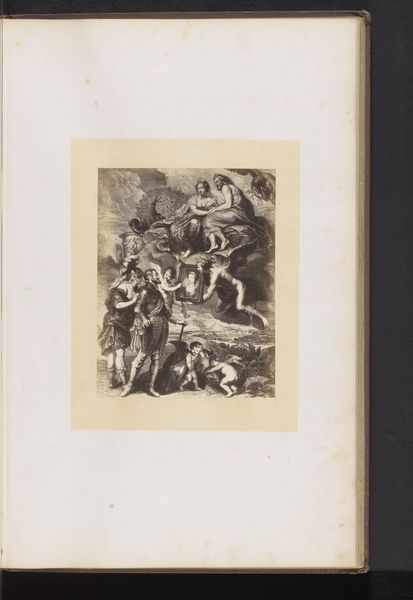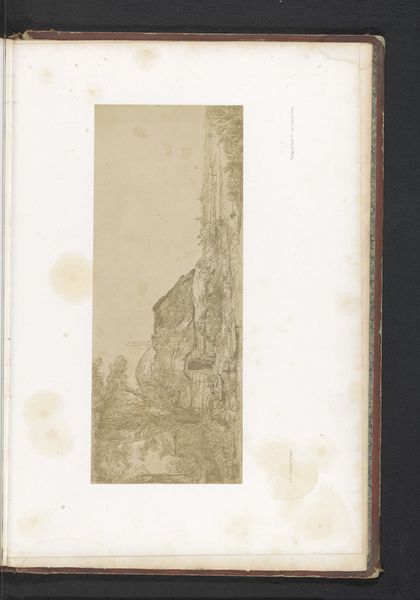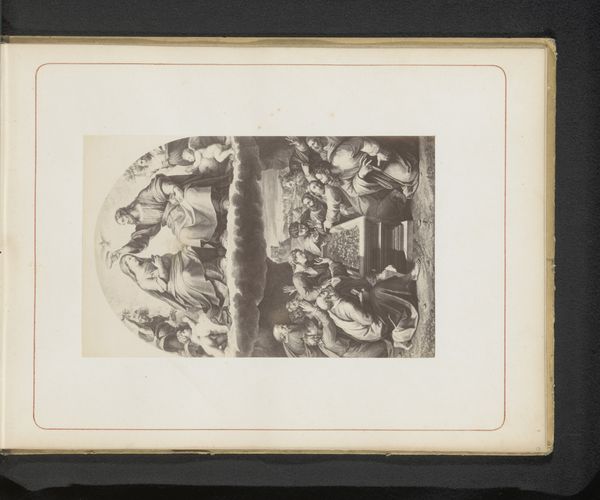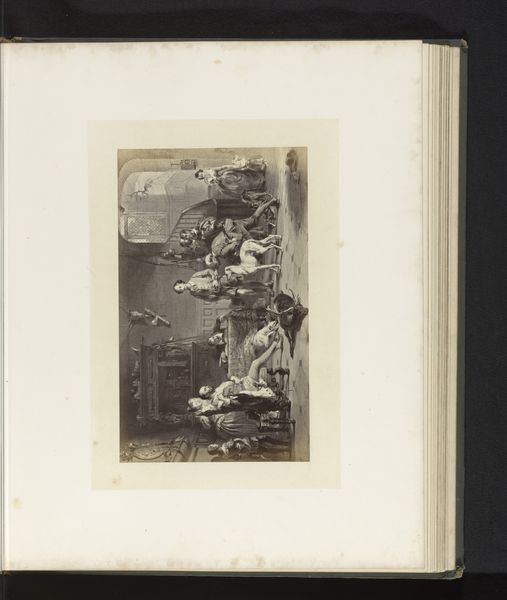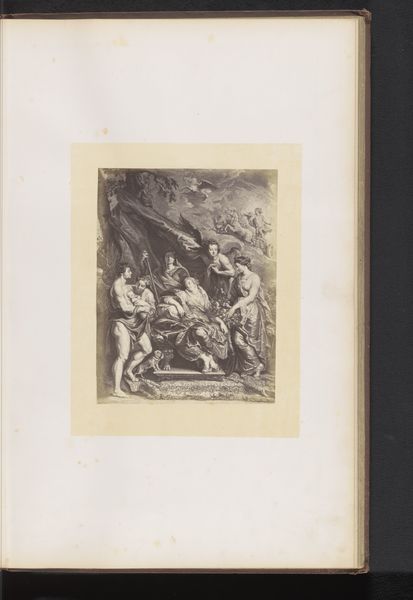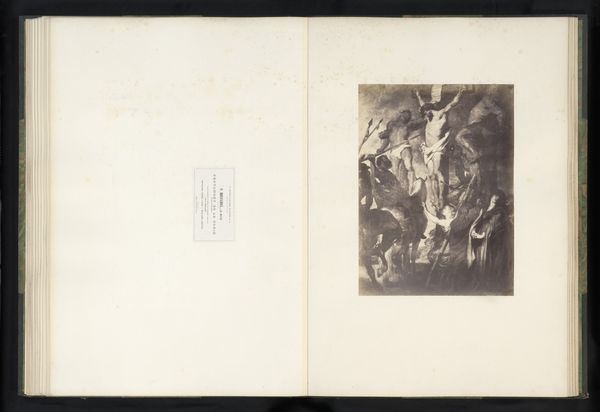
Fotoreproductie van een gravure van De kroning van Maria de'Medici in Saint-Denis door Jean-Marc Nattier, naar het schilderij door Peter Paul Rubens before 1864
0:00
0:00
Dimensions: height 185 mm, width 345 mm
Copyright: Rijks Museum: Open Domain
Editor: So, this is a photomechanical reproduction of an engraving of Peter Paul Rubens's "The Coronation of Maria de' Medici in Saint-Denis", by Jean-Marc Nattier, made sometime before 1864. The grandeur of the event depicted is evident, but the black and white tones and the lines of the engraving give it a kind of austere feeling. What can you tell me about it? Curator: This work encapsulates so much more than a historical record. It speaks volumes about power, representation, and the construction of female authority in the baroque era. Rubens, through Nattier's engraving, gives us a scene teeming with allegorical figures and historical personages, all carefully staged to solidify Maria de' Medici’s image as a divinely sanctioned ruler. Have you thought about who controlled the narrative? Editor: Not really. It seems… celebratory. Was it meant to be propaganda, or…? Curator: Think about it this way: How much say did Maria de' Medici actually have in how she was depicted, and what message that depiction would ultimately send to the masses? And how did social and cultural norms influence the final engraving and the underlying painting? Remember, representation is power. Even an ostensibly celebratory scene such as this, made for public consumption, can function as a tool to legitimize or reinforce certain socio-political arrangements. What might those arrangements be? Editor: So the picture reinforces who is really in charge and how society should run… it’s about a lot more than just a coronation. It also makes me wonder about the engraver. Curator: Exactly. Nattier's work here should also invite us to reflect on the means of circulation through the medium of print, its democratizing potential and its limitations given the prevalent socio-economic structure of the period. Consider, also, the implications of seeing this as a photomechanical reproduction and its role within broader dialogues surrounding power and image distribution. Editor: It’s amazing how much context lies beneath what at first just seems like an ornate depiction of a historical event! I'll never look at historical prints quite the same way. Curator: It’s crucial to unpack the layers and expose those undercurrents. That's how we bring the past into a critical dialogue with the present.
Comments
No comments
Be the first to comment and join the conversation on the ultimate creative platform.
